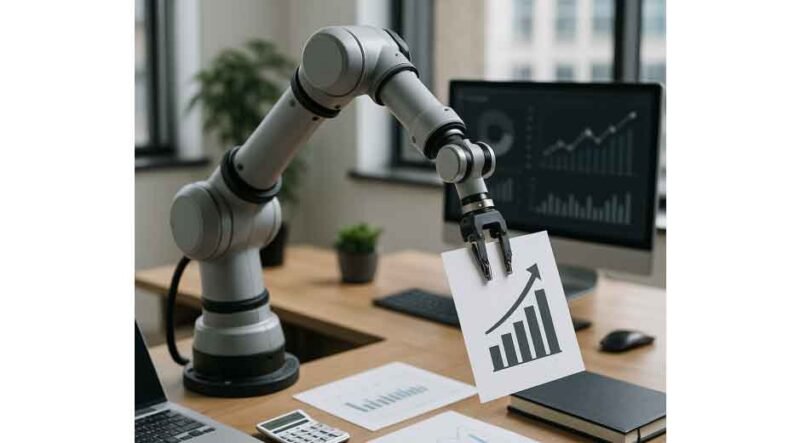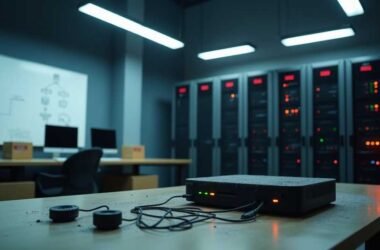In today’s competitive digital economy, businesses are under pressure to deliver faster results, elevate customer experiences, and stay lean without compromising on innovation. To survive and thrive, many have begun revisiting how their internal systems and workflows are structured. But what separates forward-thinking companies from the rest isn’t just the adoption of new tools — it’s how intelligently those tools are deployed to rewire the core operations of the business.
At the heart of this shift lies a renewed focus on intelligent process design. Unlike legacy automation strategies that often solve isolated tasks, the new wave of enterprise innovation seeks to connect people, data, and machines into a living, breathing system of work — one that can evolve with the business, not around it.
From Static Scripts to Dynamic Ecosystems
For years, many companies relied on rule-based scripts or macros to automate tasks. These tools were useful, especially in finance, logistics, and HR. But they had one glaring limitation: they lacked context. When rules changed or when exceptions arose, these automations failed or required manual intervention.
In contrast, modern enterprises need their systems to do more than follow instructions. They need them to adapt, learn, and even make micro-decisions in real time — all while preserving compliance and maintaining transparency. This is where the power of agentic automation comes into play.
By integrating automation with goal-driven, intelligent agents, organizations can now move beyond routine task execution. These agents don’t just wait for triggers; they observe, analyze, and act based on broader business objectives. For example, instead of merely logging support tickets, an agent might evaluate the priority, route it to the right team, suggest a solution from historical data, and even initiate follow-up steps based on resolution outcomes. This kind of autonomy introduces a new level of agility across the enterprise.
Aligning Technology with Strategic Intent
The most successful businesses don’t just digitize — they orchestrate. That is, they ensure that every automated component, human interaction, and data signal is aligned with a strategic goal. This is a fundamental departure from process-centric thinking. It reframes automation not as a set of tools, but as a strategy for intelligent orchestration of effort and output.
Consider a multinational logistics company operating across multiple time zones. Traditional automation may help in processing invoices or managing dispatch records. But with an agentic framework, the company can implement agents that understand delivery patterns, forecast demand fluctuations, and proactively reassign delivery fleets before issues arise. This ensures not just efficiency, but resilience.
Moreover, these systems can surface insights for human decision-makers in the right context — allowing business leaders to shift from reactive problem-solving to proactive value creation.
Human-AI Collaboration: A New Operating Model
What’s often misunderstood about enterprise automation is the belief that it replaces people. In reality, the opposite is true when implemented wisely. As technology takes over the repetitive and the predictable, human workers are freed up to focus on creative thinking, relationship-building, and high-level strategy.
The real innovation lies in the design of a hybrid workforce, where AI agents and human professionals complement each other. In marketing teams, this might look like AI agents generating personalized content suggestions while human creatives refine the narrative. In finance, agents could detect anomalous transactions while humans investigate further or consult with clients.
By adopting agentic automation at scale, companies lay the foundation for a more resilient and responsive organization. This collaboration also shifts the role of employees — from being task performers to decision enablers — ultimately elevating job satisfaction and improving output quality.
Scaling Without Chaos
One of the traditional challenges of automation has been scale. As companies grow, so do their workflows, edge cases, compliance requirements, and customer expectations. Managing thousands of bots without centralized control often leads to inefficiencies, redundancies, and security vulnerabilities.
The new generation of automation frameworks, especially those grounded in agentic design, are inherently scalable. These systems are not hardcoded into brittle workflows. Instead, they operate based on objectives and logic trees that allow for dynamic prioritization, adaptation, and learning.
This adaptability enables global enterprises to scale operations in response to market changes — whether it’s responding to seasonal demand, regulatory shifts, or global disruptions — without rewriting their entire automation logic.
Navigating Ethical and Governance Challenges
With great autonomy comes great responsibility. As businesses embrace intelligent agents that operate with less oversight, the need for robust governance structures becomes non-negotiable. It’s not enough for systems to be fast or efficient — they must also be ethical, transparent, and explainable.
Companies must ensure that every agentic decision is auditable, that bias is minimized, and that human override is always possible. In practice, this means embedding ethical frameworks into AI training data, using explainable AI (XAI) protocols, and ensuring that teams have a clear understanding of how decisions are made.
Data privacy, too, is critical. When agents are operating with access to customer records, sensitive transactions, or strategic plans, enterprises must establish layered safeguards to protect information integrity and confidentiality.
Future-Proofing the Enterprise
Business environments are becoming more volatile and complex. Whether it’s supply chain shocks, rapid shifts in consumer behavior, or competitive pressure from disruptive startups, organizations need systems that are not just efficient — they must be adaptable, intuitive, and aligned with long-term goals.
Agentic systems represent more than a technical upgrade — they’re a new philosophy of work. By combining decision intelligence, automation, and human insight, they enable businesses to respond in real time, evolve strategically, and thrive amid uncertainty.
The companies that will lead tomorrow are not the ones with the most bots or the biggest data lakes. They’re the ones that can create symphonies out of moving parts — orchestrating humans, systems, and agents into a harmonious whole. That’s not just automation. That’s transformation.








